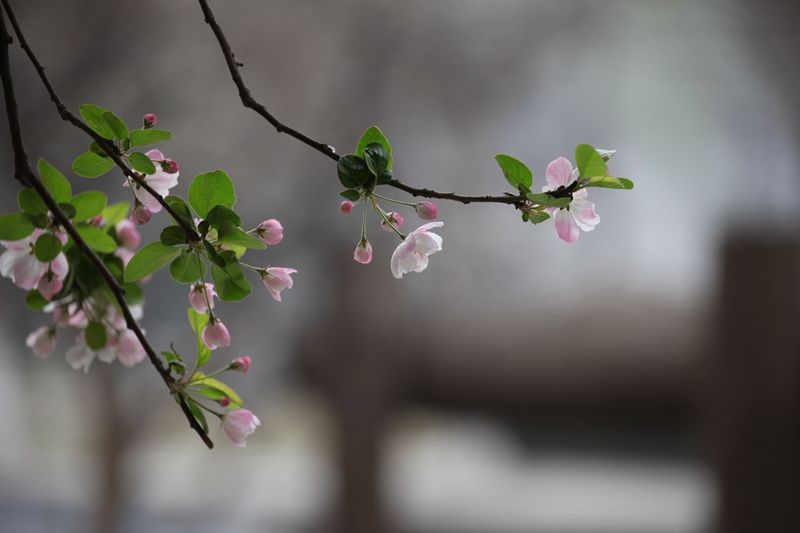
Crabapple
The Crabapple, adored by Chinese people for its blooming flowers and refreshing fragrance, is known as the “flower fairy” and the “flower princess”. Crabapple gradually blooms in April and its fruit season is from September to October.
Recommended sites: Haitang Garden and Mingde Road.
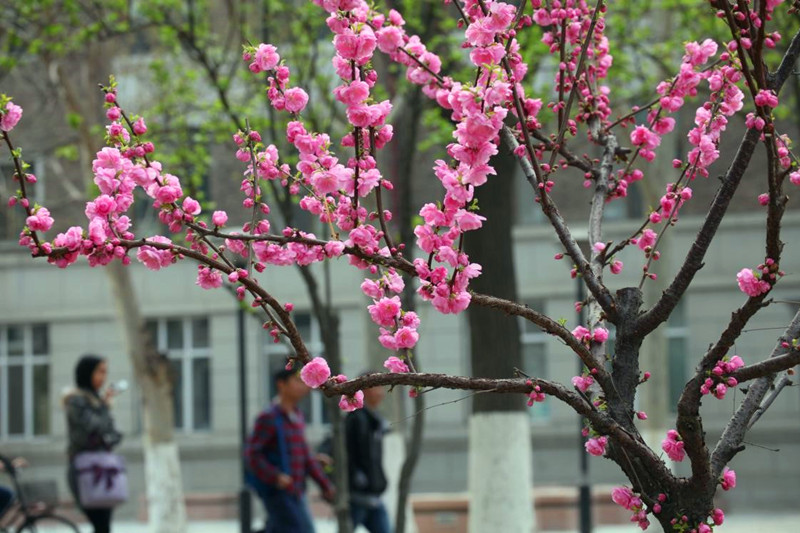
Amygdalus triloba
The amygdalus triloba is a popular shrub often planted in parks, gardens and along streets in north China. It has thick branches and leaves as well as dense and bright colored flowers which bloom in April.
Recommended sites: In front of the Building No. 9 and the northwest corner of the Youth Lake.
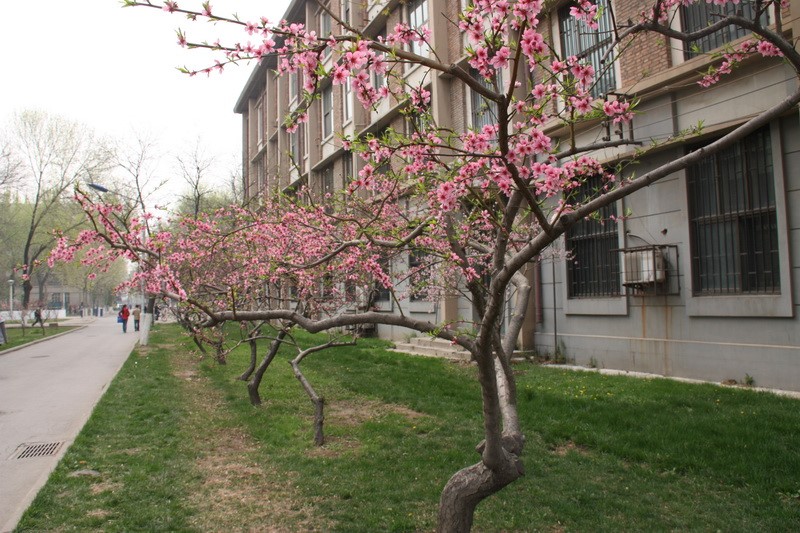
Prunus persica
Prunus persica trees enjoy sunshine with strong drought tolerance and strong cold resistance. Prunus persica have bright-colored, big and beautiful flowers which bloom from March to May and last for 15 days.
Recommended viewing sites: the northwest corner of the Youth Lake and the Huadi Road.
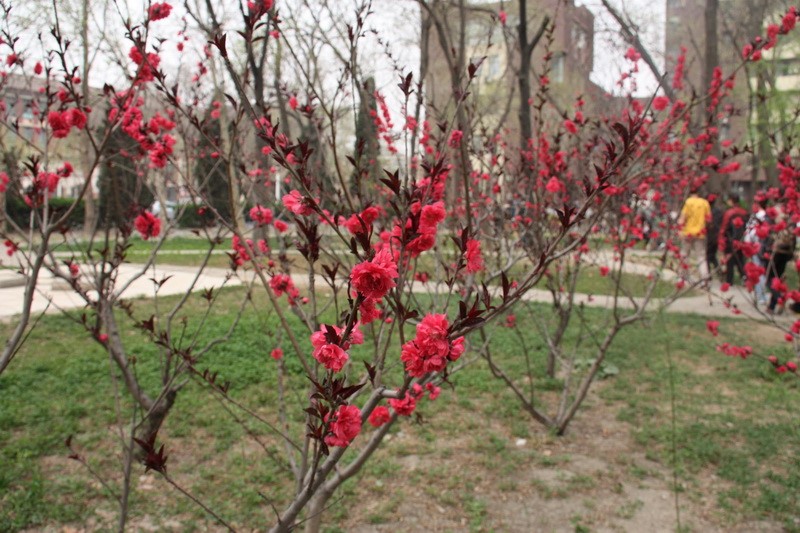
Red-leaf peach
The Red-leaf Peach has red leaves and its flowers are produced in March before the leaves emerge. It is an ornamental plant which has superior drought resistant ability, cold resistance and strong adaptability. The blooming period of the Red-leaf Peach is from April to May and the fruit season is from June to July.
Recommended sites: the northwest corner of the Youth Lake and the Huadi Road.
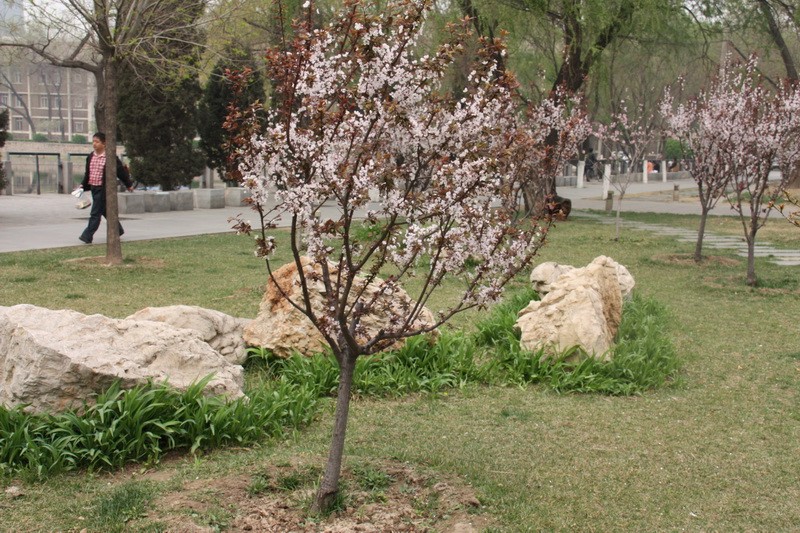
Purple-leaf plum
The Purple-leaf Plum is a well-known foliage tree with bright purple-red leaves. Purple-leaf Plum trees can be planted in groups or separately.
Recommended sites: Tailei Road and the east side of the Youth Lake.
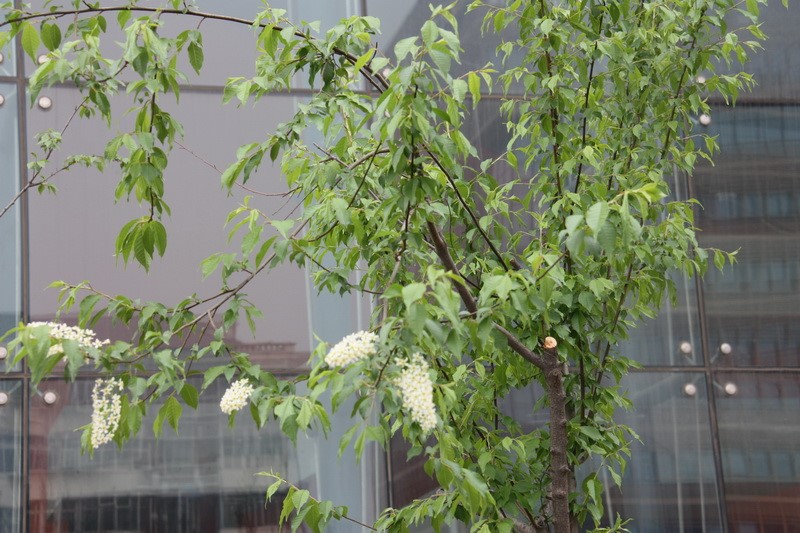
Prunus padus linn
Prunus padus linn is a species of shade tree and is also an ornamental tree with strong cold tolerance. Its bright-dark fruit are favourite food for birds. It has dense delicate white flowers which attract many bees and its green leaves turn red in autumn. The flowers bloom from April to May.
Recommended site: the south of the Youth Lake
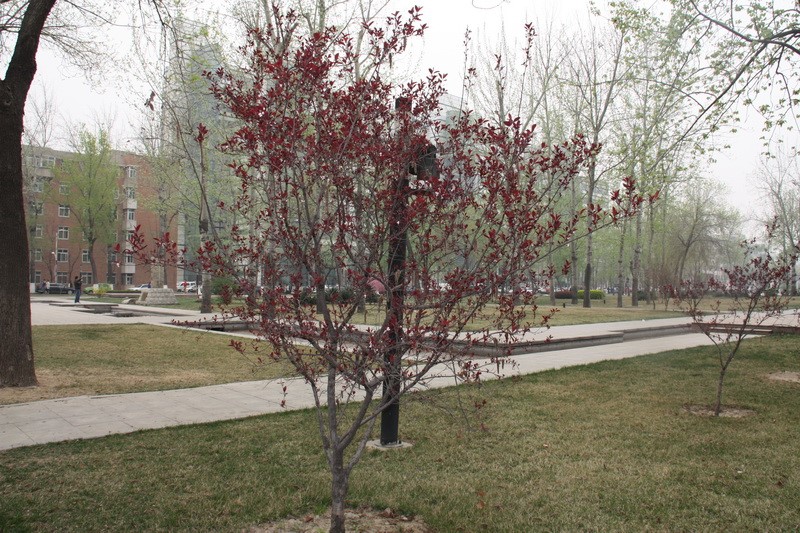
Prunus cistena
Prunus cistena has a tenacious vitality and purple-red leaves. It is regarded as one of the best kinds of plants for greening and beautifying cities. Flowering from April to May, it can be planted in groups or separately.
Recommended site: Peiyang Square
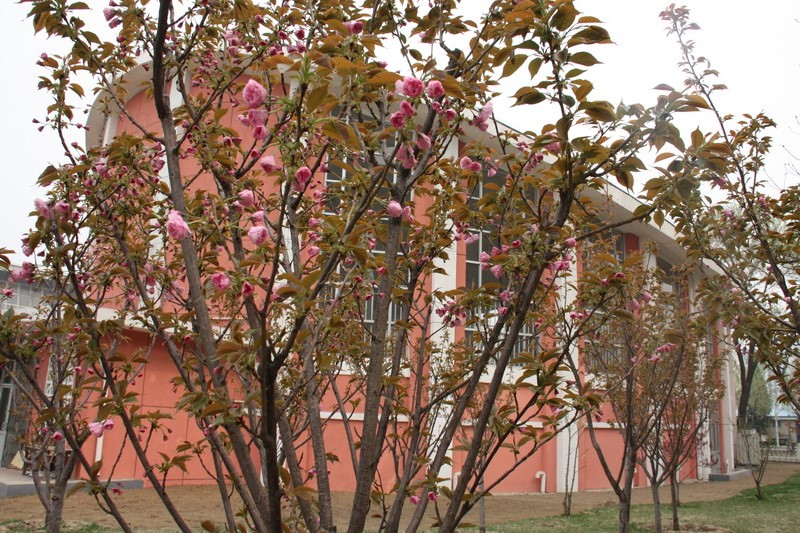
Cherry
The Cherry blooms in early spring. They are usually planted on slopes, in courtyards, on roadsides or in front of buildings. Its flowers are nearly pure white, tinged with the palest pink, especially near the stem. They bloom from March to May and usually fall within a week, before the leaves come out.
Recommended site: the east side of the Youth Lake
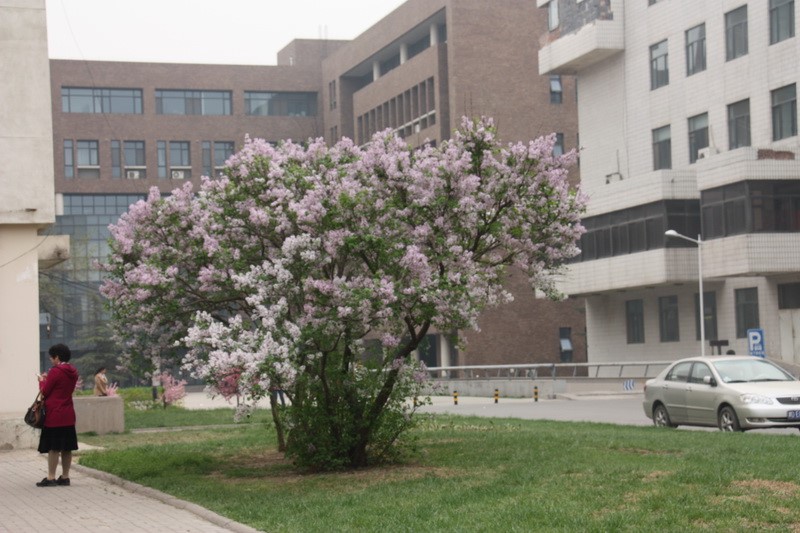
Lilacs
Lilacs are popular shrubs in parks and gardens throughout the temperate zone. It has strong drought resistant ability and satisfactory cold resistance. The flowers grow in large panicles, and several species have a strong fragrance. Flowering varies between mid-spring to early summer, depending on the species.
Recommended site: around the Building No. 19
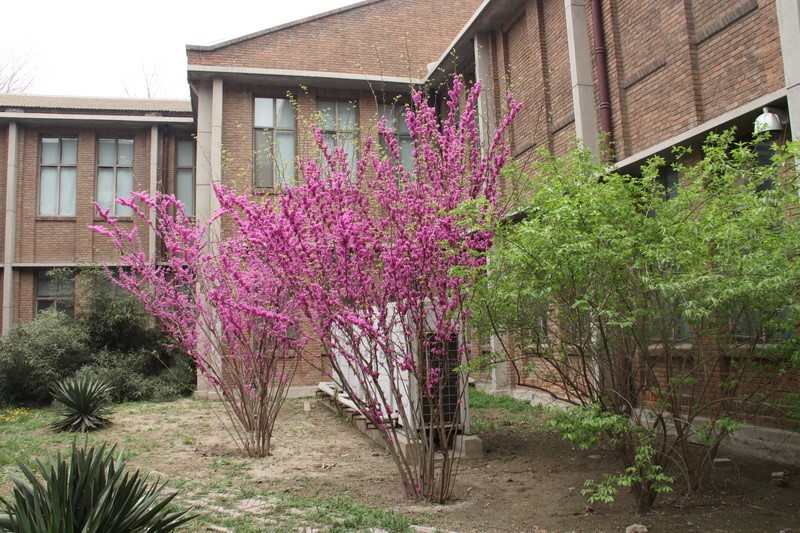
Cercis chinensis (the Chinese redbud)
As a tree, the Chinese Redbud may grow up to 15 meters tall with a trunk diameter of up to 50 centimeters; however, the species is normally found growing in shrub form. The flowers are pink or milky white in color whilst the leaf body is almost circular in shape, 6 to 14 centimeters in length and taper to a point at the end. Flowering in April, the Chinese Redbud produces fruit in October.
Recommended site: History Museum
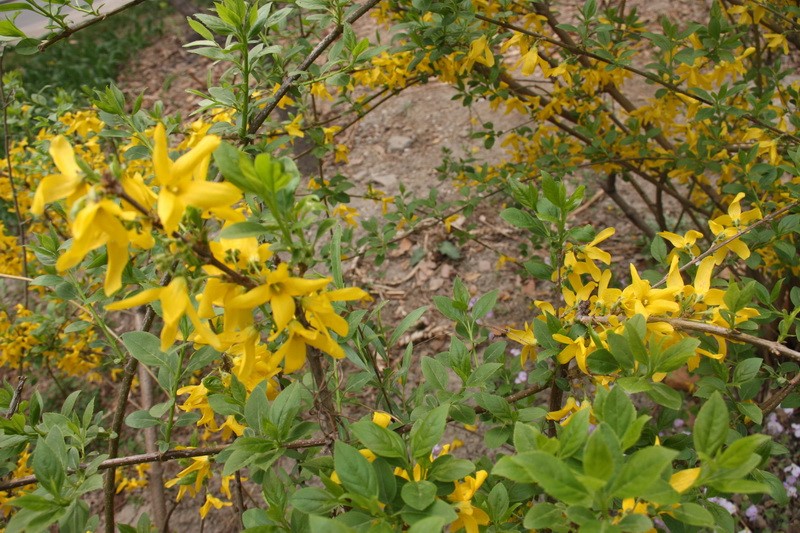
Weeping forsythia
Recognized as the city flower of Seoul, weeping forsythia is a spring flowering shrub, with yellow flowers. It is grown and prized for its toughness. It is one of the 50 fundamental herbs used in traditional Chinese medicine.
Recommended site: the northeast corner of the Youth Lake
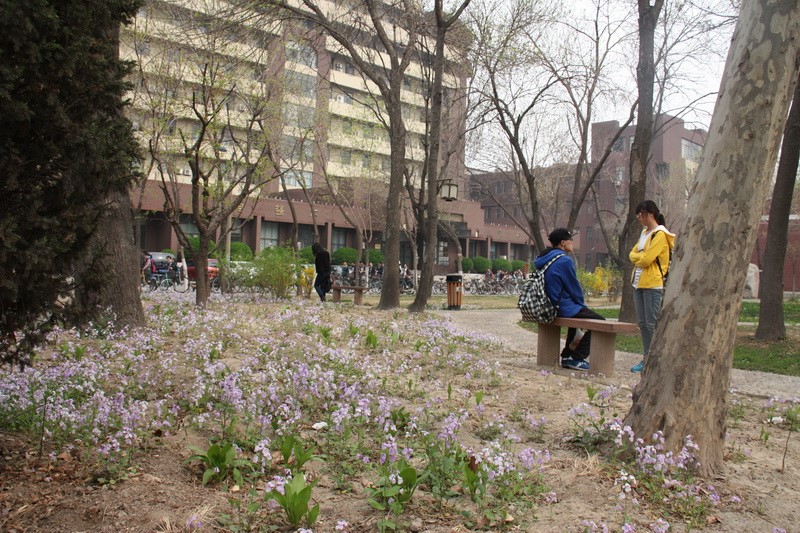
Orychophragmus violaceus
Orychophragmus violaceus has a low requirement for soil type and grows in moist and sunny environments. With a strong reproductive ability, it creates a great landscape effect. It blooms from March to April.
Recommended site: the west side of the Building No. 4.
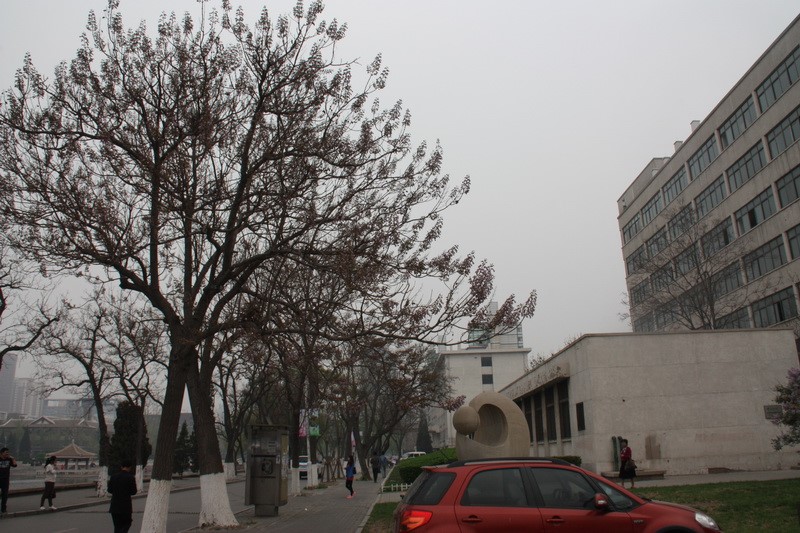
Paulownia
Paulownia needs a lot of light and does not like high water tables. It is popular for roadside planting and as an ornamental tree. It grows fast and its wood is light but strong. The flowers of Paulownia mean “forever love and waiting”. The flowering time is from March to May.
Recommended site: Jingye Road
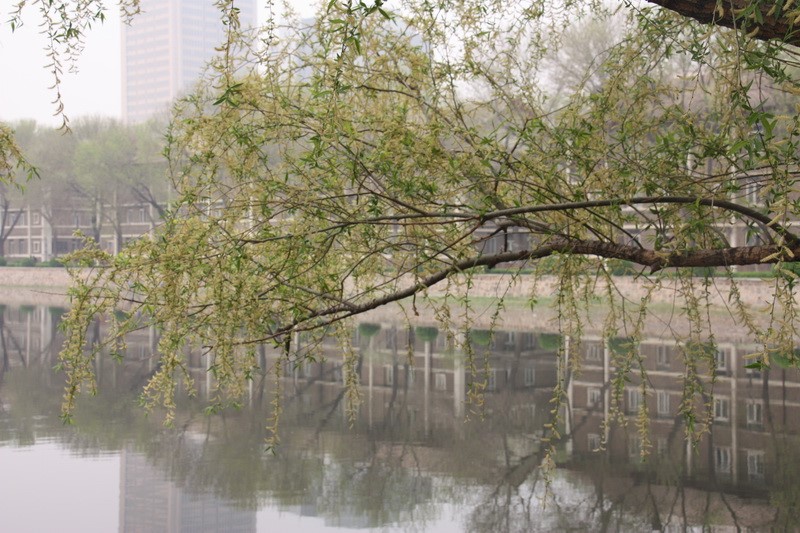
Willow
Willow has a strong adaptability and grows in sunny, moist and cold areas. It can also live in harsh environments. The life span of Willow is 20 to 30 years, and several of them live for more than 100 years. It blooms from April to May.
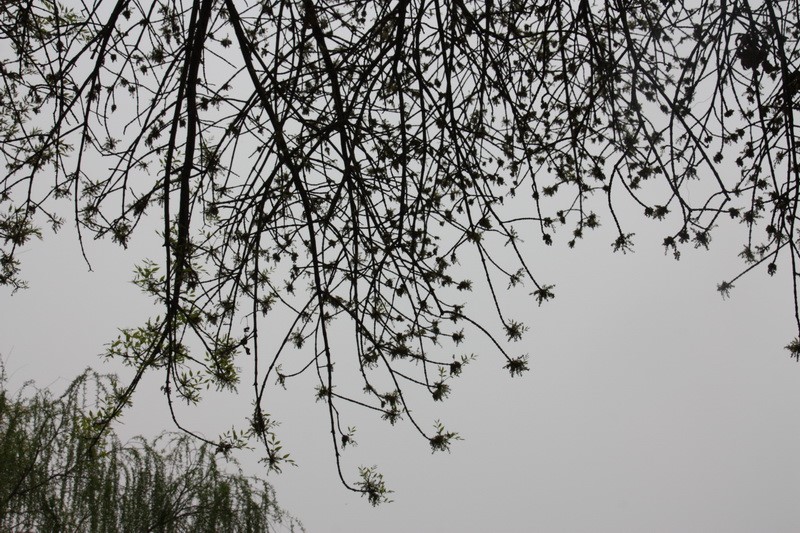
Fraxinus chinensis
Fraxinus chinensis loves light, fertile soil and hates frost. It has straight trunk and dense and green leaves. It is an excellent shade tree which is widely planted on pavements, in gardens and yards. It blooms during April to May.
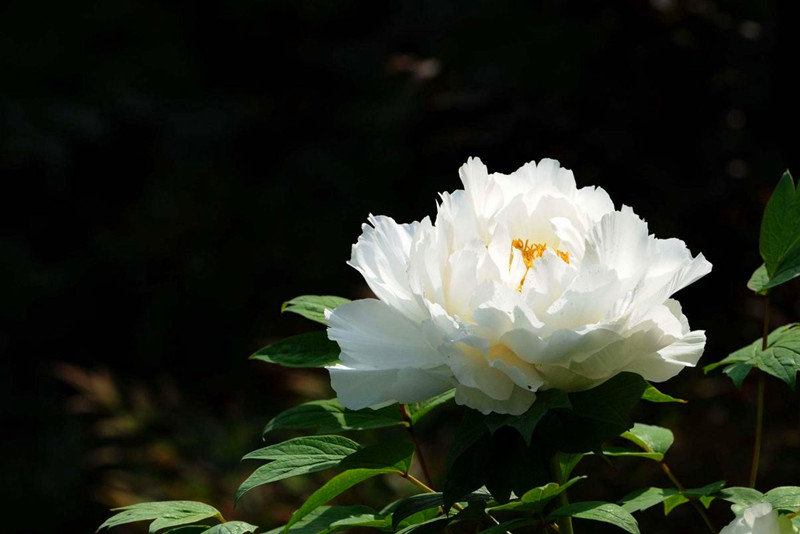
Peony
Most species of Peony are herbaceous perennial plants 0.25–1 meter tall, but some are woody shrubs 0.25–3.5 meters tall. They have compound, deeply lobed leaves and large, often fragrant flowers, in colors ranging from purple-red to white or yellow. They bloom in May. Peonies are among the most popular garden plants in temperate regions.
Recommended site: the flower beds before the Building No.9.
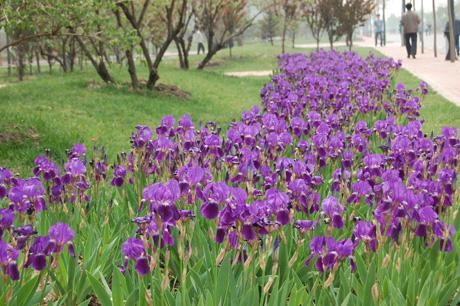
Iris tectorum
Iris tectorum has a thick, creeping buff or greenish rhizome. The flowers come in shades of lavender blue or bluish violet, or blue-lilac, or purple-blue, or sky blue. People are likely to plant them in flowerpots, yards and flowerbeds, and arrange them as cut flowers. In some foreign countries, Iris tectorum is refined into perfume.
Recommended site: Peiyang Square
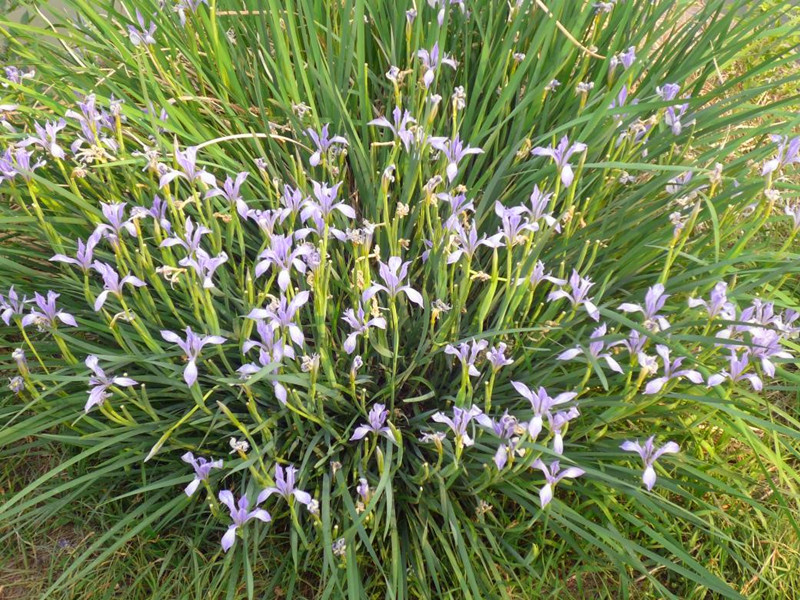
Iris lactea
Iris lacteal has umbrella-like developed roots which can reach 1-meter-depth under the surface of the earth, and therefore it has strong adaptability and water retaining capacity.
The violet scented flowers can last for 2–3 weeks and the leaves are linear, mostly ribbed, greyish green, rising from the base of the plant.
Recommended site: Mingde Road
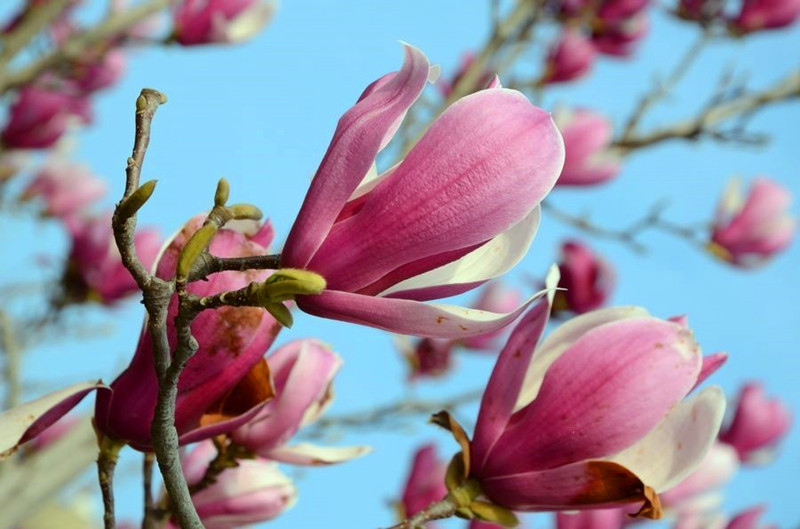
Yulan magnolia
Yulan magnolia is native to central and eastern China. It has been cultivated in Chinese Buddhist temple gardens since 600 AD. Its flowers were regarded as a symbol of purity during the Tang Dynasty and it was planted in the grounds of the Emperor's palace. It is the official city flower of Shanghai.
The leaves are ovate, bright green. The bark is a coarse, dark gray. The white flowers that emerge from February to March always re-bloom from July to September, while beautiful and thick with a citrus-lemon fragrance, are prone to browning if subjected to frost. It yields fruit from August to September.
Recommended site: the northwest corner of the Youth Lake
By: Ma Yunge
Editors: Sun Xiaofang and Ross Colquhoun






